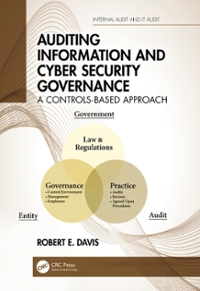QUESTION 2 State two reasons that the occurrence assertion could be violated when recording the sales. QUESTION 3: Select the correct option for each of the following five multiple choice questions Question (1) After obtaining an understanding of internal control and assessing control risk of an entity an auditor decided not to perform tests of controls. The auditor most likely decided that: A The assessed level of inherent risk exceeded the assessed level of control risk. It would be inefficient to perform tests of controls given they would not result in reduced substantive tests. Control risk should be assessed as low for key financial report assertions. The available evidence obtained through tests of controls would not support an assessment of control risk as high. Question (ii) When control risk is assessed as less than high, tests of control should be undertaken with regard to: A Both design and operation of internal control. Design of internal control. Effectiveness and continuity of controls that have been determined to exist. Both the control environment and the entity's risk assessment process. Question (iii) Which of the following audit tests would be regarded as test of controls? Inspecting monthly bank reconciliations for evidence that they have been reviewed by the chief accountant. Tests of additions to property, plant and equipment by physical inspection Sending an external confirmation to a debtor to check the outstanding balance at year end. Counting inventory and checking that the quantity is accurately recorded in the inventory records. Question (iv) Which of the following audit tests would be regarded as test of controls? A B C D Tests of the signatures on purchase documents for appropriate authorisation. Tests of the specific items making up the balance in the general ledger account. Test of additions to property, plant and equipment by physical inspections Tests of inventory pricing to suppliers' invoices. Question (v) Which of the following is the most effective control activity to detect vouchers that were prepared for the payment of goods that were not received? A Count goods upon receipt in the storeroom. B Match purchase order, receiving report and supplier's invoice for each voucher in the accounts payable department. Verify vouchers for accuracy and approval in the internal audit department. D Compare goods received with goods requisitioned in the receiving department QUESTION 4: You are working on the audit of Games R Us (Game), a digital game wholesaler. The audit working papers includes the following description of an internal control over the purchasing processes: (1) All purchases must be authorised by the Purchasing Manager. (2) When goods are needed, a Clerk in the Purchasing Office prepares a Purchase Order. (3) The Purchase Order is then forwarded to the Purchasing Manager for approval. (4) Where the Purchasing Manager approves the purchase, he initials the Purchasing Order and forwards it to the Purchasing Clerk for actioning. Required: Question (1) What is the purpose of this internal control? Question (ii) You ask your assistant to test the effectiveness of this this control by selecting a random sample of 30 Purchase Orders and counting the number of Purchase Orders that have been initialled by the Purchasing Manager. You specify a Tolerable Error of 8%. What is the purpose of specifying a Tolerable Error? Question (ii) Which assertion did you test in ii (above)? Question (iv) Which of the audit procedures listed in ASA 500 did you apply in this test? Question (v) In this test, how would an error be defined? Question (vi) If you found that there were 2 Purchase Orders that had not been initialled by the Purchasing Manager, would you conclude that the internal control was effective or ineffective. Show any formula you rely on and all calculations









